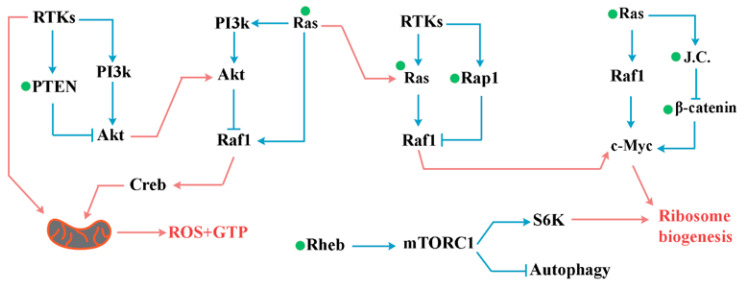Figure 4.
An elemental blueprint for the proposed redox-sensitive cellular clock. The main contributors to a cellular clock are I1-FFLPI3K/PTEN, I1-FFLPI3K/Ras and I1-FFLRas/Rap1 connected via AND gates. Reprogramming of key redox-sensitive proteins (marked by green circles) resolves the I1-FFLs leading to amplification of downstream signalling outputs. Other minor contributing I1-FFLs downstream to Ras signalling are also reprogrammed in a redox-dependent manner (right). While Rap-induced Raf-1 stabilises c-Myc, sequestration of β-catenin to Ras-induced formation of the junctional complexes reduces β-catenin-mediated trans-activation of c-Myc locus. Redox-mediated disassembly of the junctional complexes resolves this I1-FFL. The outcome of redox-mediated reprogramming of linked I1-FFLs is activation of the pro-anabolic master regulator c-Myc and mTOR-dependent inhibition of catabolic activity leading to accelerated progression of biological phenomena (e.g., cell cycle).

